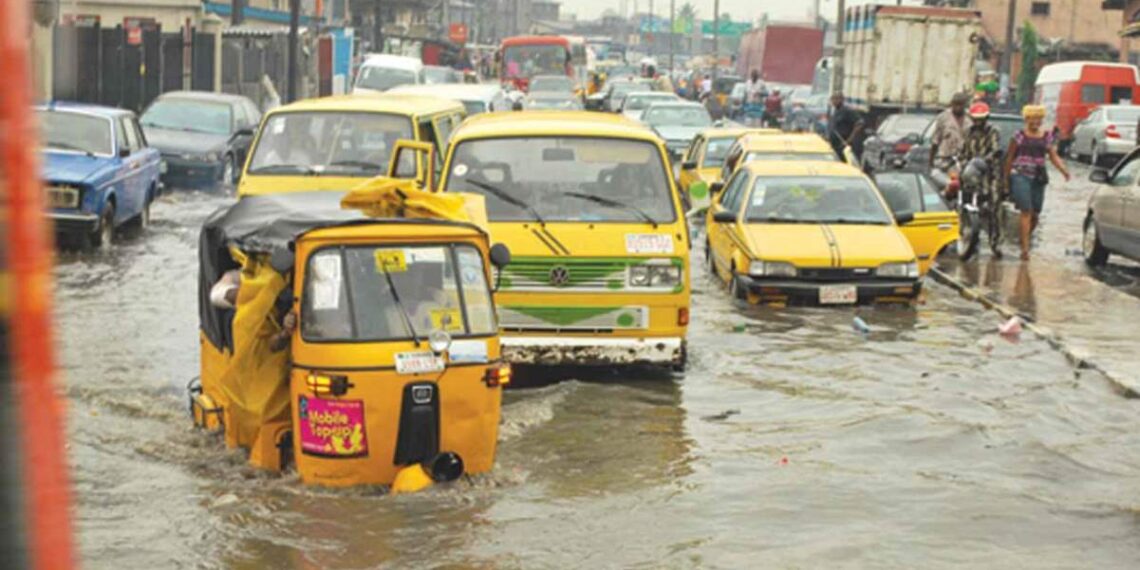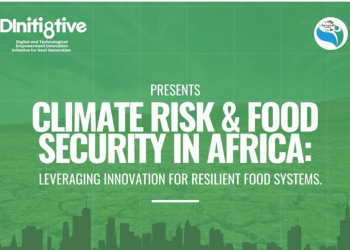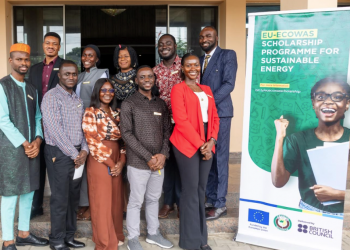With the rapid advancements in technology, artificial intelligence (AI) has emerged as a powerful tool with the potential to address critical challenges in the Global South nations.
One area where AI can make a significant impact is in mitigating the challenges to the deployment of essential resources, such as waterways.
However, the implementation of AI solutions in these regions comes with its own set of obstacles, including limited infrastructure, resource constraints, and unique socio-economic factors.
This article explores the potential of AI to address these challenges and offers strategies for deploying AI in the Global South to improve water management and access.
Waterways technology and AI are increasingly being utilized to improve the efficiency, safety, and sustainability of water transportation and management.
AI is being used to optimize shipping routes, optimize vessel performance, and predict maintenance requirements. Additionally, AI is being used to monitor water quality and detect pollution in waterways.
Similarly, waterways technology is incorporating AI-driven solutions to improve navigation, prevent accidents, and ensure compliance with regulations.
For example, autonomous vessels are being developed that use AI to navigate and operate safely in waterways.
Broadly, the integration of AI with waterways technology is expected to streamline operations, reduce costs, and minimize environmental impact in the water transportation industry.
This development holds great promise for the future of waterways technology and management.
In Global South nations, the integration of waterways technology and AI has the potential to address critical challenges related to water transportation, management, and sustainability.
Here are a few examples of how these technologies are being utilized in these regions:
1. Smart Dredging: In some developing countries like Bangladesh, where inland waterways are extensively used for transportation, AI-powered dredging technology is being employed to manage silt accumulation and maintain navigability in rivers and channels.
By using AI algorithms to predict sediment build-up and determine optimal dredging schedules, this technology helps to keep waterways open for commerce and transport.
2. Aquatic Monitoring and Pollution Detection: In countries like India and Brazil, where many waterways are heavily polluted, AI technologies are being deployed for real-time monitoring of water quality and early detection of pollution.
These systems use sensors and AI algorithms to analyze data on water contaminants, enabling authorities to take proactive measures to address pollution and ensure safe drinking water for communities living along these water bodies.
3. Autonomous and Energy-Efficient Boats: In various coastal and riverine areas across Southeast Asia and Africa, AI-powered autonomous vessels and boats are being developed to improve transportation efficiency and reduce fuel consumption.
These vessels use AI for navigation, collision avoidance, and optimizing routes, leading to reduced operational costs and lower carbon emissions.
4. Flood Prediction and Management: In regions prone to annual flooding, such as parts of Nigeria and Indonesia, AI is being employed to develop predictive models for flood forecasting.
By analyzing various data sets like rainfall, river levels, and topography, AI can provide early warnings and help local authorities implement effective flood management measures to mitigate the impact on communities and infrastructure.
These examples illustrate how the convergence of waterways technology and AI is being embraced in Global South nations to address transportation, environmental, and safety challenges, with the potential to bring about positive socio-economic and environmental impacts.
Permit me to highlight some examples from the Global North nations, perhaps, in light of adopting an advocacy for such adoption.
In Global North nations, waterways technology and AI have seen significant advancement and implementation in various aspects of water transportation, management, and sustainability. Here are a few notable examples of how these technologies are being utilized:
1. Autonomous Ships: In countries like Norway and Finland, there is a growing focus on developing autonomous and remotely operated ships using AI and advanced navigation technologies.
These vessels can navigate waterways and oceans without direct human intervention, reducing the risk of accidents and improving efficiency.
One prominent example is the YARA Birkeland, an autonomous container ship being developed in Norway for emission-free and autonomous operations.
2. Water Quality Monitoring Systems: In the United States and Canada, AI-powered water quality monitoring systems are extensively used to analyze and manage water pollution in lakes, rivers, and coastal areas.
These systems use AI algorithms to process large volumes of data from sensors, drones, and satellites, providing real-time insights into water quality and enabling proactive measures to address pollution and ensure safe water resources.
3. Smart Ports and Harbors: Many ports in countries like the United Kingdom, Germany, and the Netherlands have implemented AI-based predictive analytics and smart infrastructure to optimize operations and enhance security.
AI is used to predict vessel arrival times, automate cargo handling processes, and enhance security measures, leading to improved efficiency and reduced environmental impact.
4. Flood Risk Management: In regions vulnerable to flooding, such as the Netherlands and parts of the United States, AI technologies are being used for flood risk assessment and early warning systems.
By leveraging data on weather patterns, river levels, and urban infrastructure, AI can provide accurate flood predictions and enable authorities to take proactive measures to mitigate potential damages.
These examples demonstrate how waterways technology and AI are being leveraged in the Global North to improve safety, reduce environmental impact, and enhance the efficiency of water transportation and management systems.
The adoption of these technologies signifies a significant shift toward more sustainable and advanced waterway solutions in developed nations.
Essentially, deploying waterways technology and AI in Global South nations presents its own set of challenges, including limited infrastructure, financial constraints, and diverse environmental and socio-economic factors.
Mitigating these challenges requires tailored approaches and solutions. Here are some strategies to address the challenges:
i. Infrastructure Adaptation: A key challenge in many Global South nations is the lack of advanced infrastructure to support waterways technology and AI.
To mitigate this, initiatives can focus on adapting existing infrastructure to accommodate new technologies instead of building entirely new systems. This approach reduces the financial burden and accelerates deployment.
ii. Local Capacity Building: It’s crucial to invest in capacity building and skill development within local communities to ensure the effective deployment and maintenance of AI technologies.
This involves training local engineers, technicians, and officials on operating and maintaining the AI systems, fostering a sense of ownership and sustainability.
iii. Public-Private Partnerships (PPPs): Establishing partnerships between governments, private sector entities, and international organizations can facilitate the deployment of AI in waterways technology.
These partnerships can bring in funding, expertise, and technological resources to address the infrastructure and financial challenges facing Global South nations.
iV. Tailored Solutions for Different Contexts: Global South nations have diverse environmental and socio-economic contexts, meaning that a one-size-fits-all approach may not be effective.
Tailoring AI solutions to the specific needs and challenges of each region, considering factors such as local ecology, climate conditions, and community needs, can enhance the effectiveness of deployment efforts.
V. Access to Funding and Resources: Lack of financial resources often hinders the deployment of AI technologies in Global South nations.
Providing access to funding, grants, and low-interest loans for technology acquisition and infrastructure development can facilitate the deployment process and encourage innovation in waterways technology.
Vi. Community Engagement: Engaging local communities in the deployment process is essential for the sustainable and inclusive implementation of AI technologies.
Understanding the cultural, social, and environmental implications of technology adoption is critical to ensure acceptance and long-term success.
By addressing these challenges through targeted strategies and collaborative efforts, Global South nations can effectively deploy AI and waterways technology to address pressing water management and transportation needs while fostering sustainable development.
In conclusion, leveraging AI for waterways and other essential resources in the Global South presents immense opportunities for sustainable development and improved livelihoods.
However, successful deployment requires careful consideration of local contexts, collaboration with local stakeholders, and addressing the challenges specific to the region.
By overcoming these obstacles, AI can play a pivotal role in mitigating the challenges to deployment and ultimately contribute to the sustainable development of the Global South.
It is imperative for stakeholders, including governments, international organizations, and technology companies, to work together to ensure the effective deployment of AI solutions in the Global South, leading to tangible benefits for communities and the environment.
Toriola, however, assured that telecom giant would continue to create shared value in within its communities through the Ambition 2025 strategy.
“Notwithstanding the elevated volatility in our operating environment in 2023, we maintained our pledge to create shared value in Nigeria, which is a key priority of our Ambition 2025 strategy.
From an environmental perspective, we progressed our commitment and work towards achieving net-zero emissions by 2040 through the utilisation of the most up-to-date and efficient technologies.
We also formed service partnerships to increase energy and cost efficiencies, as well as to lower carbon emissions.
We reduced our cumulative scope 1 and 2 emissions by 21% in 2023 compared to the baseline value determined in 2021.
In building sustainable societies, we expanded internet access to Nigerians by increasing our broadband coverage by 1.9pp to 89.8% as at December 2023.
Female representation in our workforce increased to 38.3% by December 2023 (December 2022: 35.6%), marking pleasing progress towards our 2030 goal of 50%.
Additionally, we committed N1.7 billion to our corporate social investment programmes through the MTN Nigeria Foundation, which is focused on youth development and national priority projects.
As part of our commitment to supporting national priority projects, MTN Nigeria Foundation signed a memorandum of agreement and collaboration with the Private Sector Health Alliance to boost healthcare at the grassroots level through revitalising 52 primary healthcare centres nationwide.
The Writer, Prof. Ojo Emmanuel Ademola is the first Nigerian Professor of Cyber Security and Information Technology Management, and the first Professor of African descent to be awarded a Chartered Manager Status.












